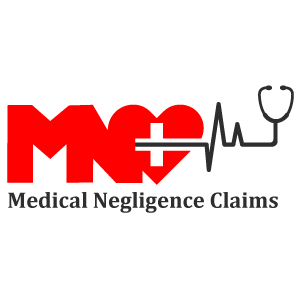Medical Negligence Attorney

Medical Negligence Attorney
Expressing the unique bond between a doctor and a patient can be difficult. While anesthesiologists typically practice in hospitals and clinics, it is not common for them to take responsibility for patients upon admission. When patients are admitted to the hospital, it is the collective responsibility of the medical staff to provide them with the best possible care. According to legal experts in medical law, we have consulted, the care provided to patients by the Trust during our work is expected to meet or exceed the care provided by any other physician that the patient may encounter. It has not yet been tested in a British court whether a doctor who happens to be present when a patient experiences a cardiac arrest has a duty of care towards them, and providing assistance in such a scenario would not be considered a “good Samaritan” act. While we believe this to be correct, we cannot confirm it.
“Breach of duty”
The term used to describe the inadequate procedures of a medical professional is “judgment”. When deciding tort law cases, courts typically apply the “reasonable man” test, which asks if the defendant’s behavior would be considered reasonable by an average person in the same situation. However, when a possible breach of professional obligation exists, the relevant code of professional conduct is applied instead of the reasonable person standard.
The leading precedent on the topic of professional norms is the Bolam v. Friern Hospital Trust case, where an anesthesiologist was accused of negligence for failing to bind, relax the muscles, or warn the patient of the risks of fractures during electroconvulsive therapy (ECT). Due to the divergent views on the benefits of muscle relaxation versus the risks of the relaxant, it was impossible to establish negligence. If a doctor follows accepted procedures, the plaintiff has the burden of proving that another doctor in the same situation would have acted differently. However, the “Bolam standard” has been criticized because it relies heavily on expert testimony from both parties, which may be challenged.
It is up to the medical community to prove that the doctor was negligent if other doctors have defended their actions. Reliable experts can be used as part of a defense strategy against reckless or harmful conduct. The court may rule because several rulings have cast doubt on the idea that medical experts opining on practice standards can reliably determine the appropriate level of therapy. Therefore, “the court must vigilantly assess whether the justifications provided for placing a patient at risk are valid… or whether they derive from a residual adherence to outdated concepts.” A similar mistake was made by a pediatric resident who failed to intubate a child with recurrent bouts of intermittent croup. It usually takes time for hospitals to start using new medical technologies.
Harm and causation
The patient would not have suffered any injuries if the doctor had not taken the action that led to them. It can be difficult to determine the root cause of many medical complications, such as paralysis after aortic aneurysm repair, which could be attributed to the surgery or the administration of epidural analgesia, especially since anesthesiologists seldom perform treatments independently. Lack of causation is a common defense in medical malpractice cases, particularly when there are competing factors involved. However, to hold the defendant accountable for damages, it must be shown that the breach was a significant contributor to the harm or that negligence was the most probable cause of the injury.
Res ipsa loquitur is a legal doctrine that can be invoked when all other explanations have been exhausted, such as when a swab is found to be retained in the abdomen during laparotomy, which can only be assumed to be the result of negligent loss during a previous laparotomy. If the doctor inadvertently injures the wrong part of the body, such as with a brachial plexus block, and harm results from that, causation is presumed unless the defendant can demonstrate another reasonable explanation.
Criminal negligence”
If a doctor’s negligence is directly responsible for a patient’s harm, they may face criminal charges, with a higher standard of proof required beyond reasonable doubt, and the potential for a prison sentence. In such cases, the General Medical Council is likely to investigate and consider fitness to practice proceedings against the doctor. Though criminal negligence cases are rare, there has been a rise in investigations into potential manslaughter claims following serious adverse incidents involving doctors, with authorities examining whether the patient’s death was caused by the doctor’s actions or inaction. The patient’s death may result from objective proof of incompetence, ignorance, or subjective recklessness, such as ignoring a hazardous situation. Medical students have been involved in recent incidents, and proving their incompetence may be easier than with licensed doctors. The jury is responsible for determining whether a doctor’s conduct or failure to act constitutes criminal negligence.

